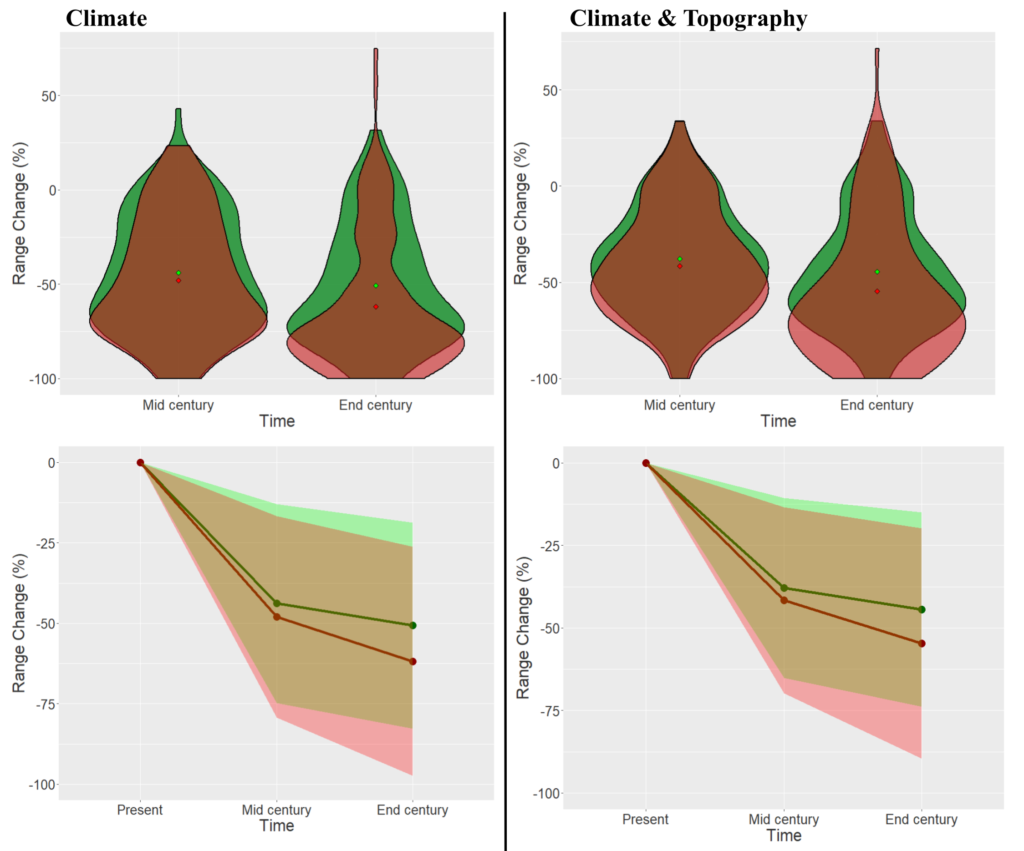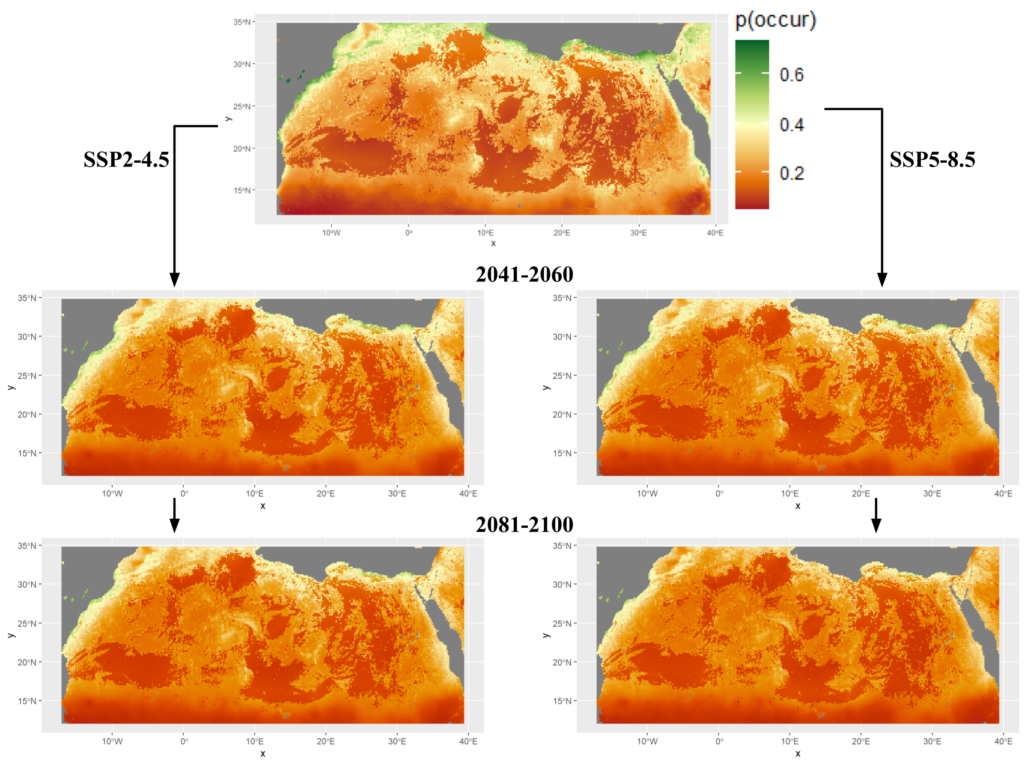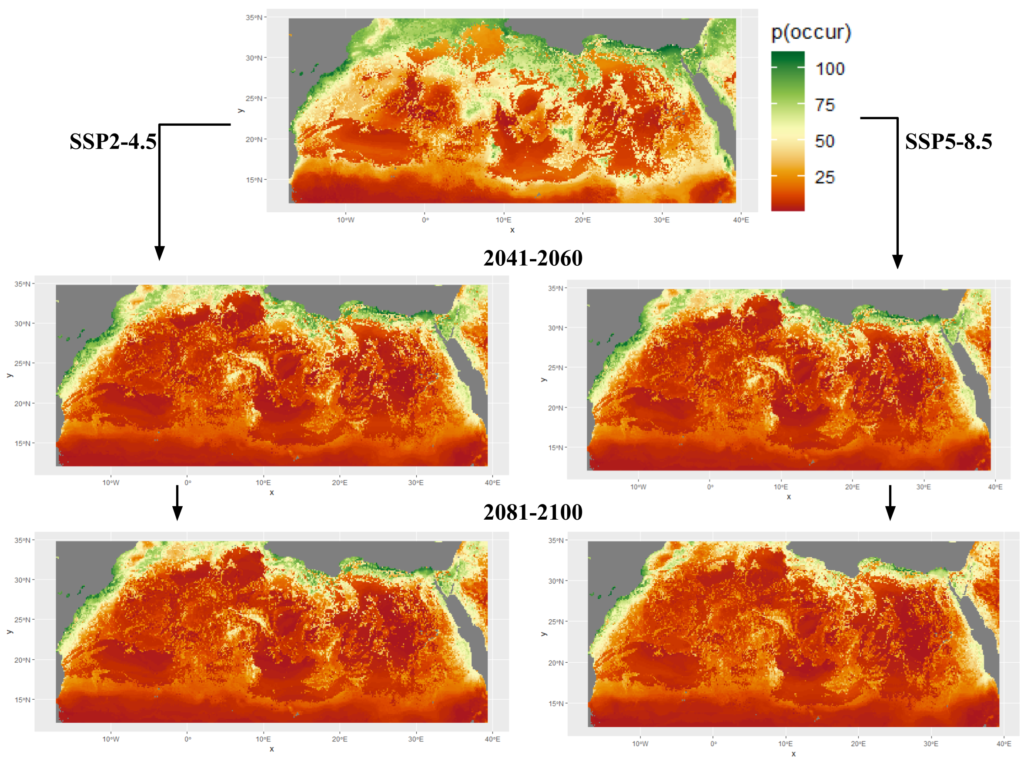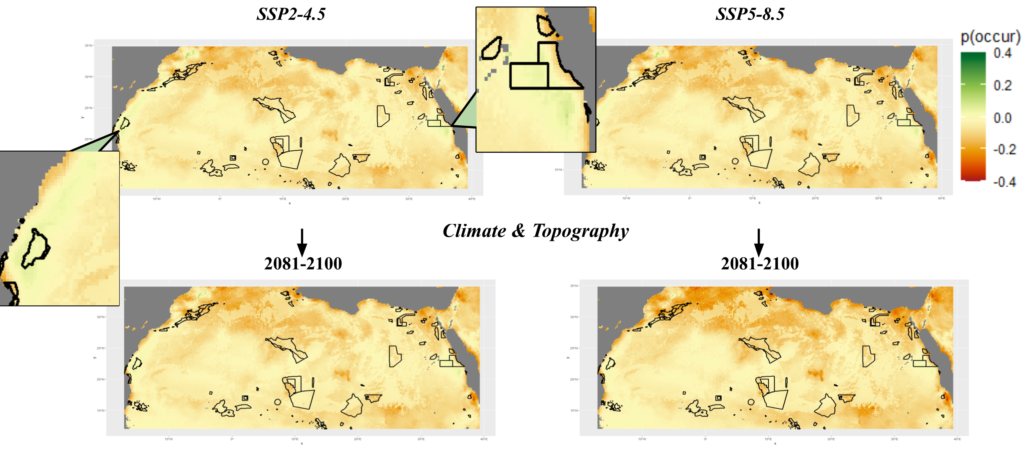Predicted Changes and Trends of Range Sizes
My work predicted massive loss of range for the Saharan biodiversity. Even under the “optimistic” future an average of 50% of range is lost by the end of the century. Moreover, the median is consistently lower than the mean, i.e. the majority of species were predicted to experience even more loss than the average.

Comparison between the species classes predicted that the birds will experience the most loss, with a predicted average loss of 75% by the end of the century under a pessimistic future. The non-threatened species, suprisingly, showed substantially more loss than the threatend. Comparison within flagship status, however, found only minor differences.
Predicted Range Shifts
The predicted averge habitat suitability and species richness showed to decrease over time all across the Sahara. The areas which maintain relatively good suitability and richness around the coastlines and, to a lesser extent, mountain ranges. The areas with little change are the rocky areas with already low suitability and richness.


Comparison of predicted range shifts per class showed the quickest drop in suitability and richness for the birds across most of the Sahara, even already by the mid century point (2041-2060). The mammals and reptiles predicted similar range shifts, with some loss over time, especially for the mountain ranges. The comparison of flagship and non-flagship species predicted overall higher suitability and richness for the flagships across the Sahara, mainly for the northern Sahara and internal mountain ranges. Comparison of suitable habitat and richness for the threatened and non-threatened species predicted nearly identical spatial patterns and probability of occurrence for both groups over time.
For all the different groups the areas of highest suitability and species richness presently was predicted to be the coast lines, northern Sahara and mountain ranges. Although, the latter two were predicted to first lose suitability and richness. The areas predicted to best support Saharan biodiversity over time were the Atlantic and Mediterranean coasts.
Potential Refugia
The areas to see an increase in average habitat suitability over time were found on the Atlantic and Red sea coasts. Inland Sahara predicted little to no change in suitability, yet results in range shifts predicted these areas to already be low in suitability. Additionally, range shifts results showed relatively high suitability for the mountain ranges, however here one can see the mountain ranges show a drop in suitability. As such, the areas with already high suitability and no predicted decrease in suitability, i.e. best candidates for potential refugia, are the Atlantic and Red sea coasts.

These potential refugia have some protected areas currently in place, though certainly are still missing a substantial part (especially of the Atlantic coast).